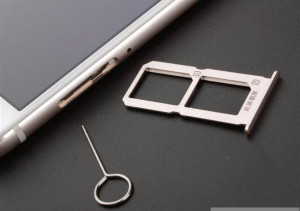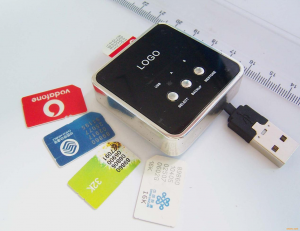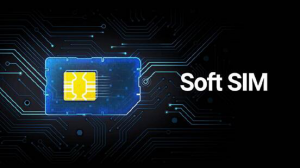SIM bye! The cell phone doesn’t need to be loaded anymore
Speaking of SIM cards, I believe we are not strangers. Everyday we use mobile phones, laptops, SIM cards is the standard mobile phone, without it, you can not access network operators to communicate services. In fact, this mobile phone card has been changed for many generations, there are at least three kinds of style, the latest is the smallest nanoSIM card, but now with the electronic products are becoming more and more thin, the inner space of land, can save the province element. Finally, someone in the SIM card of this piece to a knife. ESIM technology is beginning to spread, and change is coming.
What is SIM and what is eSIM?
The full name of “SIM” is “subscriber identity module”, that is, user identity module”. Its main function is to identify and store data when users communicate over the network. However, from the current trend of the development of smart phones, the existence of SIM card limits the evolution of mobile devices in part, limits the space and design of the equipment, and increases the process difficulty and manufacturing costs of the equipment. In recent years, with the rapid development of eSIM technology, it is a general trend for eSIM to ban the existence of physical SIM cards.
The eSIM card actually embeds the traditional SIM card directly on the device chip instead of being added as an independent removable part. In addition, eSIM cards can reduce the space by up to 90% compared to an entity SIM card, because it has been embedded in the device during the manufacturing process and the user can remotely activate the connection. This approach will allow users to more flexible choice operator packages, or without the need to unlock equipment, buy new equipment under the premise of changing operators.
Ban physical SIM Apple Corp in the most radical caillou. As early as 2006, Apple has applied for a “dynamic operator selection” patent, meaning free switching operators. In 2014, the 4G version of iPad began using Apple’s built-in Apple SIM card”. In recent years, domestic mobile phone manufacturers have also acted in this area of business. Millet MIUI7 millet roaming, HUAWEI’s sky pass and other business, are trying to use eSIM technology to ban SIM card. Meizu Flyme’s “international traffic” business. The use of TEE based SoftSim for air card issuance, the full potential.
Meizu’s development of SoftSim based on TEE
5 this month, held in Beijing in the second session of the eSIM technology and Innovation Summit, Meizu Flyme communication with TEE based on the SoftSim implementation of the “international traffic” business, gains two awards in one fell swoop, innovative product award and outstanding technology award scheme. Both ESIM and SoftSim aim to replace the entity SIM card, but apart from the common goal of simplifying the terminal physical structure and reducing the terminal size, their business goals are entirely different, and there is a big difference in the technology implementation.
SIM card with good security for the user authentication information, and compared to the SIM card, based on TEE SoftSim is more sensitive to the problem of information security, air card need transmission, storage and use of SIM card resource data, these data in two-way transmission process and the server of mobile phone security requirements will be higher, the lack of strength the manufacturer is difficult to guarantee the safety of this transfer process. Meizu Flyme innovative use of TTE security encryption technology, through key generation, encryption, decryption and network authentication and a series of measures to ensure the SIM card resource data to bank level security.
The emergence of SoftSim has turned into a trend
The difference between eSIM and SoftSim is that the basic feature of eSIM is that the carrier controls the information written into the ESIM card, and the user still buys the communication service from the operator. And the information of SoftSim is controlled by the terminal business directly, and the relation between the user and the operator is cut off, and the communication service is sold to the user by the terminal.



